Pyracanthas Can Be Pruned Relatively Hard To Restore A Neat Framework Of Branches

SHRUBS > PYRACANTHA > PRUNING

Elizabeth is a Permaculture Garden Designer, Sustainability Consultant and Professional Writer, working as an advocate for positive change. She graduated from the University of St. Andrews with an MA in English and Philosophy and obtained a Diploma in Applied Permaculture Design from the Permaculture Association.
Reviewed By PETER LICKORISH

Peter is a Horticulture Lecturer and self-employed Horticulturist, with a passion for diverse areas of the industry - from garden design to the science behind plant growth and propagation. He has completed the Royal Horticultural Society’s Master of Horticulture (MHort) Award and lectures on RHS courses at Bedford College.
IN THIS GUIDE
PYRACANTHA GUIDES
Cuttings Propagation
Planting
Pruning
Pyracantha, also known as Firethorn, is an attractive shrub prized for its flowers and the red, orange or yellow berries that follow in autumn and winter.
Pyracantha is a good low-maintenance plant that generally requires little care.
However, it can be pruned in specific ways; as a free-standing shrub, an evergreen hedge, or to stand against a wall or fence.
When thinking about whether, when and how to prune these shrubs can be an important part of their care.
According to Horticulture Technician Peter Lickorish: “Its fast-growing nature means that misshapen pyracanthas can be pruned relatively hard to restore a neat framework of branches.
“This is best done during active growth, such as April-August, but make sure to check there are no nesting birds inside first, and be prepared to miss one year’s flowering and fruiting.”
Do You Need To Prune Pyracantha?
This is an easy-going shrub that can, if left undisturbed, grow rather large in the right setting.
We have a huge, unusually thornless pyracantha growing in a corner of our property close to (but not trained on) an east-facing stone wall, with an open southern aspect, which is at least 4-5m in height – more like a tree than a shrub.
It was here when we moved in and other than the odd prune here and there (and harvesting branches for decoration at Christmas) I do not prune it regularly or pay it much attention at all.
It still flowers and produces orange-red berries abundantly.
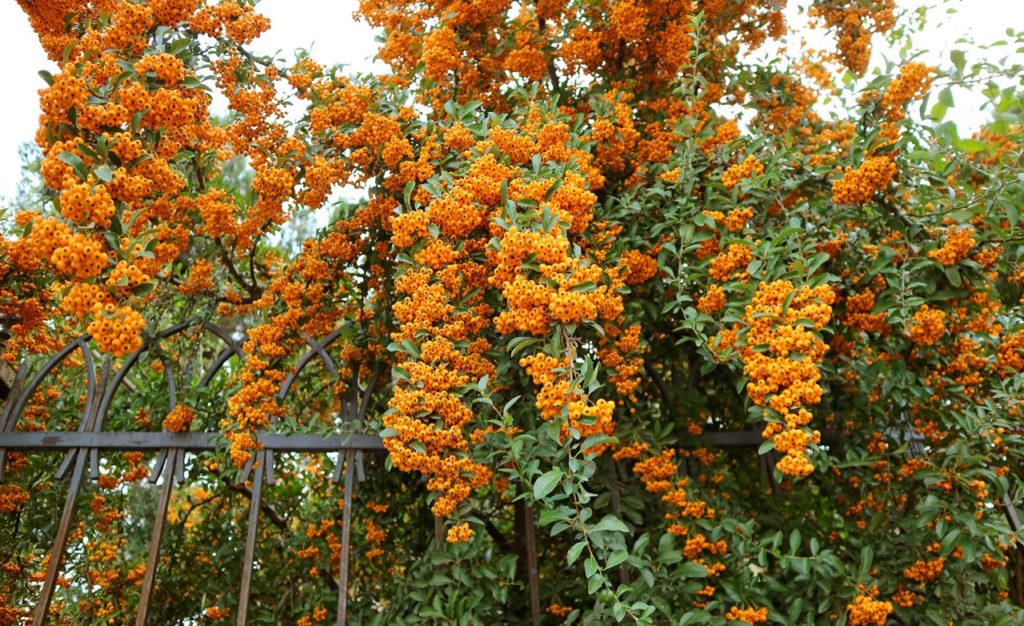
Where it is located, it looks beautiful and does not impinge on other plants.
We value it not only aesthetically but for the wildlife it attracts.
Birds nest in its branches and in a nesting box we have placed there, and jackdaws and pigeons spend a lot of time on the rooftops nearby.
Of course, many pyracanthas will need to be kept somewhat more in check and many are more compact in form and structure.
“Theoretically, a hard prune in winter could kill a Pyracantha,” shares Master Horticulturist Peter.
“Unlike deciduous plants, evergreens do not expect to lose many leaves over winter, so do not store nutrients and sugars in the same way. Winter pruning requires the plant to draw on these limited reserves.”
Whether you need to prune much at all, and how much you need to prune, will depend on the variety you choose and where you choose to grow it.

If pruning prior to flowering, be aware that pyracantha flowers mostly on year-old shoots, meaning you should try not to trim away all the previous year’s growth.
However, if you need to drastically prune back an out-of-control pyracantha, you should do so – the flowers and berries can be relied upon to return the following year.
Similarly, if any of the plant’s shoots have been damaged by fireblight or blackened by pyracantha scab, you should prune away the affected areas.
Pruning Free-Standing Shrubs
If you are growing your pyracantha as a stand-alone, free-standing shrub, then all you need to do is carry out some very basic maintenance pruning.
In the middle of spring, look over the shrub carefully and simply remove any dead, damaged or diseased material.
Always wear thick gloves when pruning, to protect your hands from the plant’s large, sharp thorns, and be careful not to disturb any nesting birds.
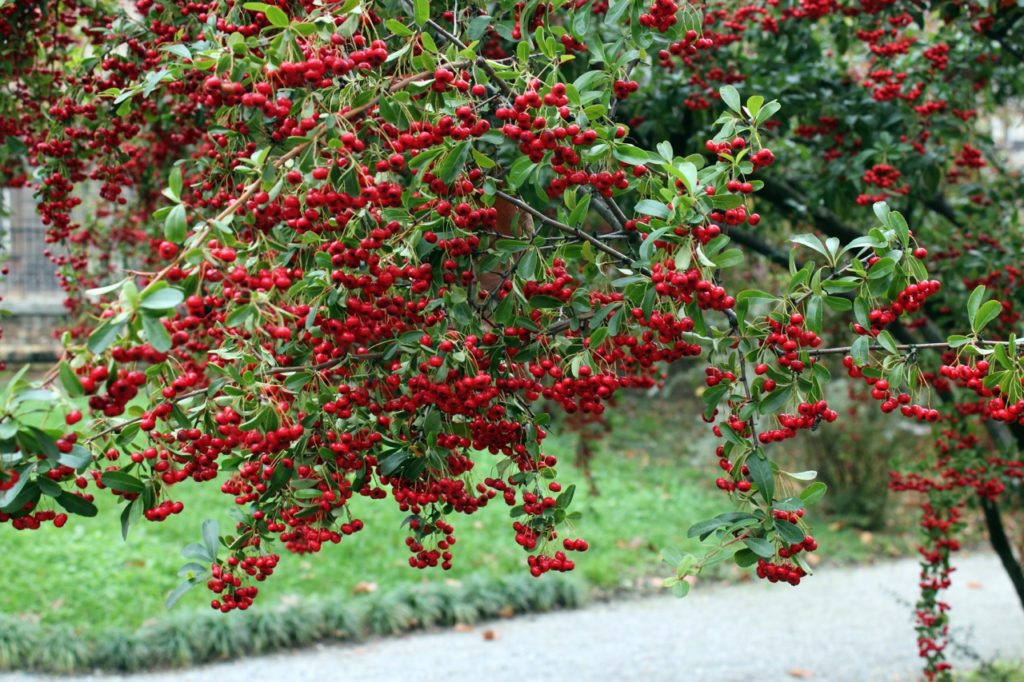
At the same time, you can also remove any branches that are growing in an unwanted direction or which look unsightly because they are distorting the desired shape of the shrub.
If the pyracantha is too large and overgrown for its location, you can consider renovation pruning and can expect reliable regrowth if you cut back pretty hard.
Pruning Hedged Pyracantha
One reason that you might need to undertake more pruning than usual is that you wish to grow pyracantha as a hedge.
Pyracanthas can make great hedges, and their prickles can be useful in keeping animals in, or people out.
When pyracantha is pruned as a hedge, a neater and more orderly appearance may be desired.
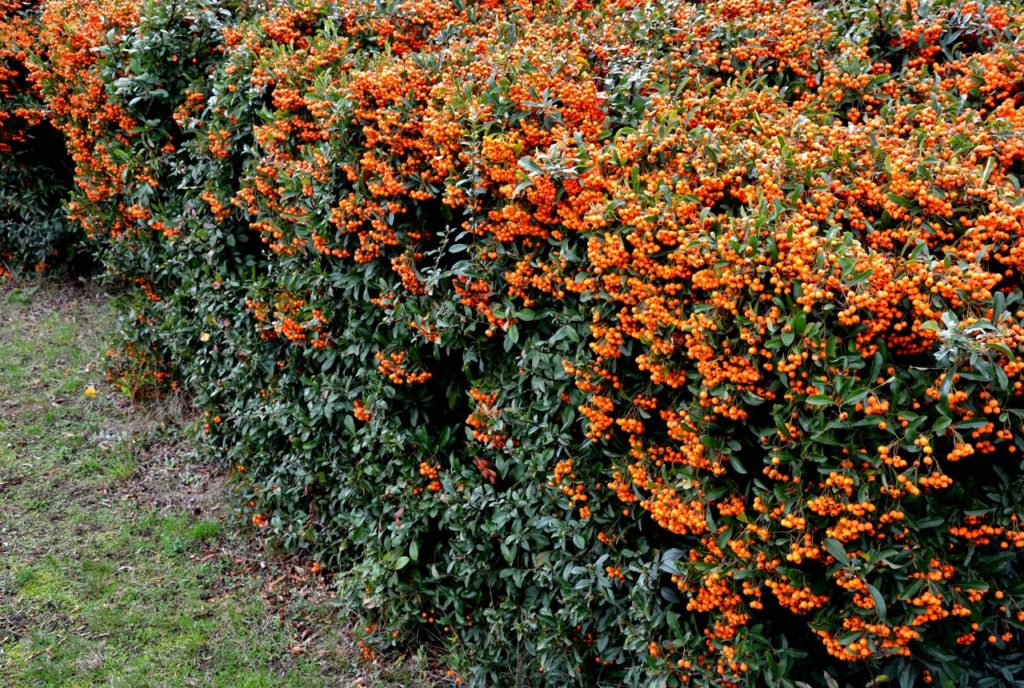
To shape pyracantha as a hedge, it is usually pruned 2-3 times between spring and the end of the summer.
Most people will prefer, for visual and wildlife appeal, to keep as many berries as possible, but you will almost certainly lose some berries as you seek to keep the pyracantha constrained into a neater hedge form.
Pruning Wall Or Fence Trained Shrubs
Another time when more specialised pruning is required is when you are growing pyracantha against a wall or fence.
A number of pyracantha varieties lend themselves well to being formally trained as espaliers against a wall or sturdy fence, with horizontal branches trained along wires installed into the supporting structure.
These pyracanthas, trained to grow against a wall, are pruned each year after they flower.
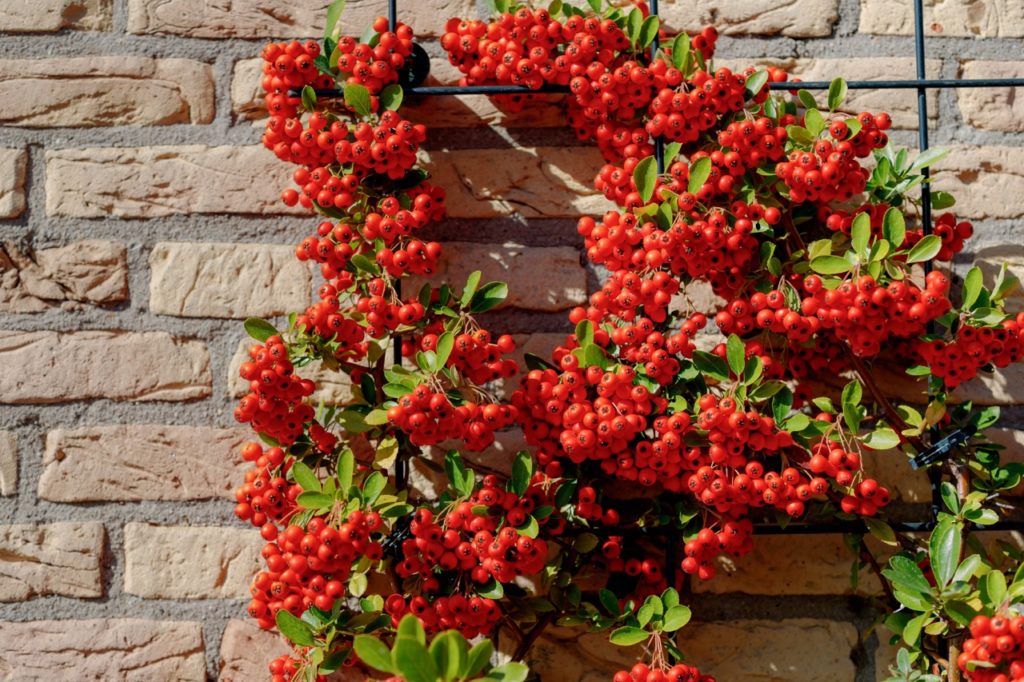
Waiting until after flowering will help to limit the loss of wood on which berries will be produced.
After they flower, you should shorten side shoots to within 2-4 buds of the permanent framework of branches and remove any shoots growing inwards towards the wall or fence or outwards away from it.
Be careful not to prune out developing berries or spent flowers at this point.
Then, in late summer, shorten all side shoots that emerge from the main framework, taking them back to almost the point where the clusters of berries are produced – this is usually 2-3 leaves away from the base of a side shoot.
This will expose this year’s berries and encourage flowering and fruiting for the following year.
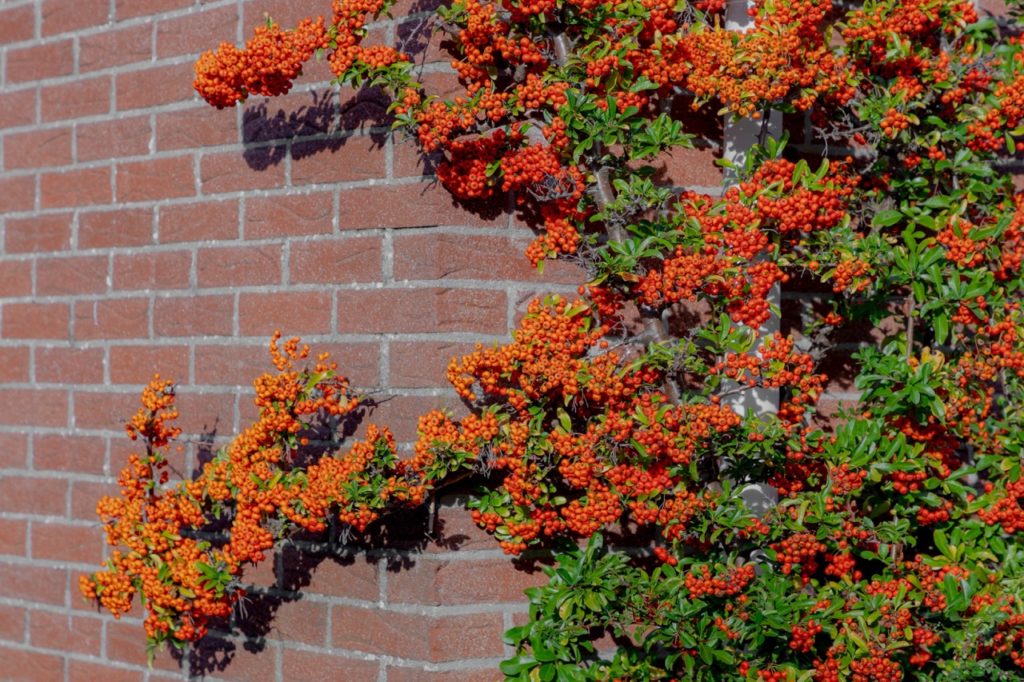
Remember, your choices about where and how to grow certain plants in your garden, as well as the specific varieties that you choose, will have a big impact on how much ongoing work you are going to have to do.
If you want a low-maintenance garden where less pruning is involved, growing smaller pyracanthas as free-standing shrubs will make your life easier.
However, if you want to consider other forms and specific growing positions, a little pruning is not necessarily too complex and might be worth your trouble.
Can You Prune Pyracantha In Winter?
The ideal time to prune your plant is in spring, after flowering, as you will be able to clearly see which shoots to leave, and which are old growth that is no longer flowering and berrying.
However, you can also prune in winter – just be aware that the plant flowers on year-old shoots, and if you remove all the previous year’s growth, your plant may not bloom very well that spring.
“A winter prune will restrict the plant’s growth, while spring or summer pruning is more about maintaining manageable growth,” concludes Peter.
